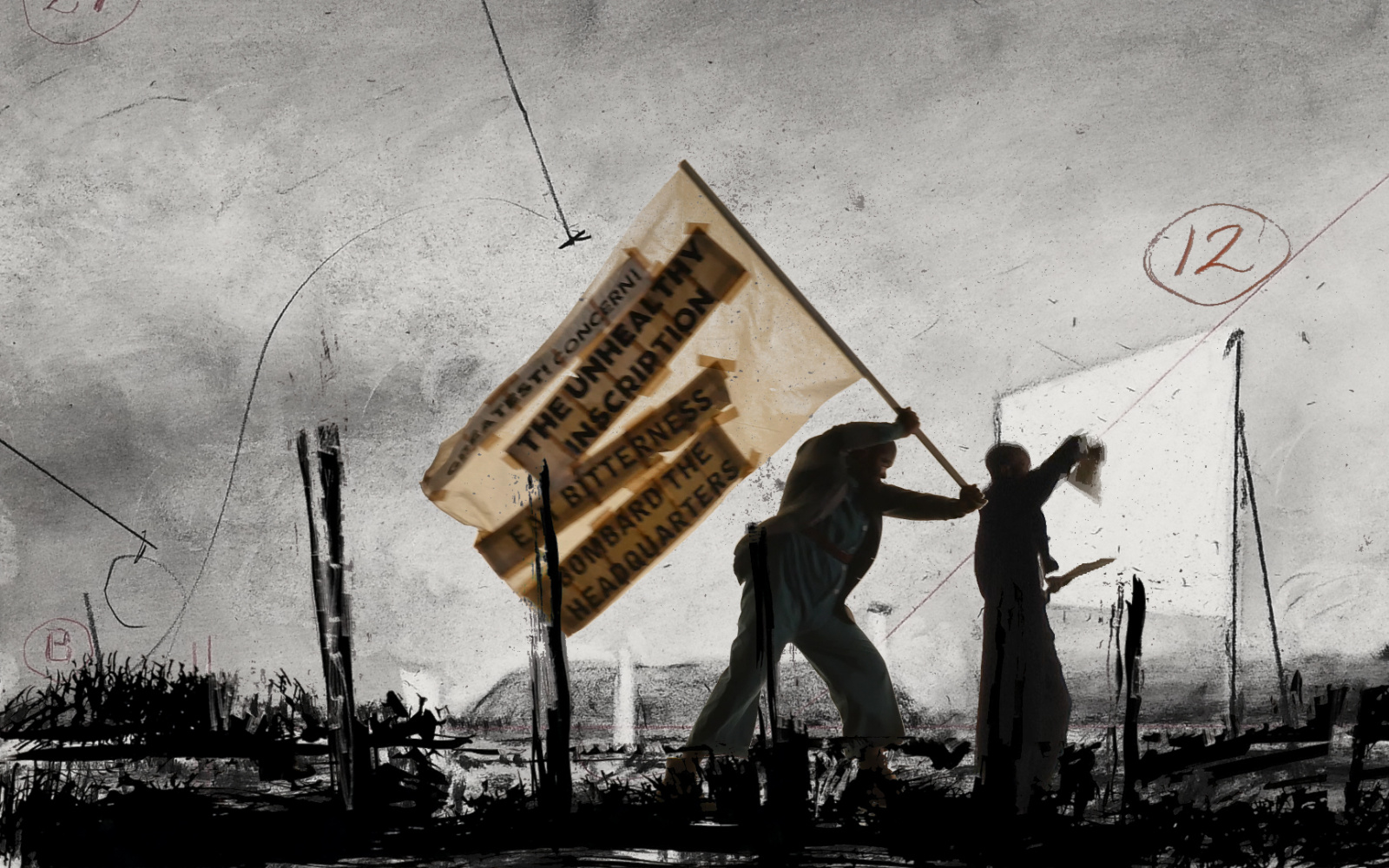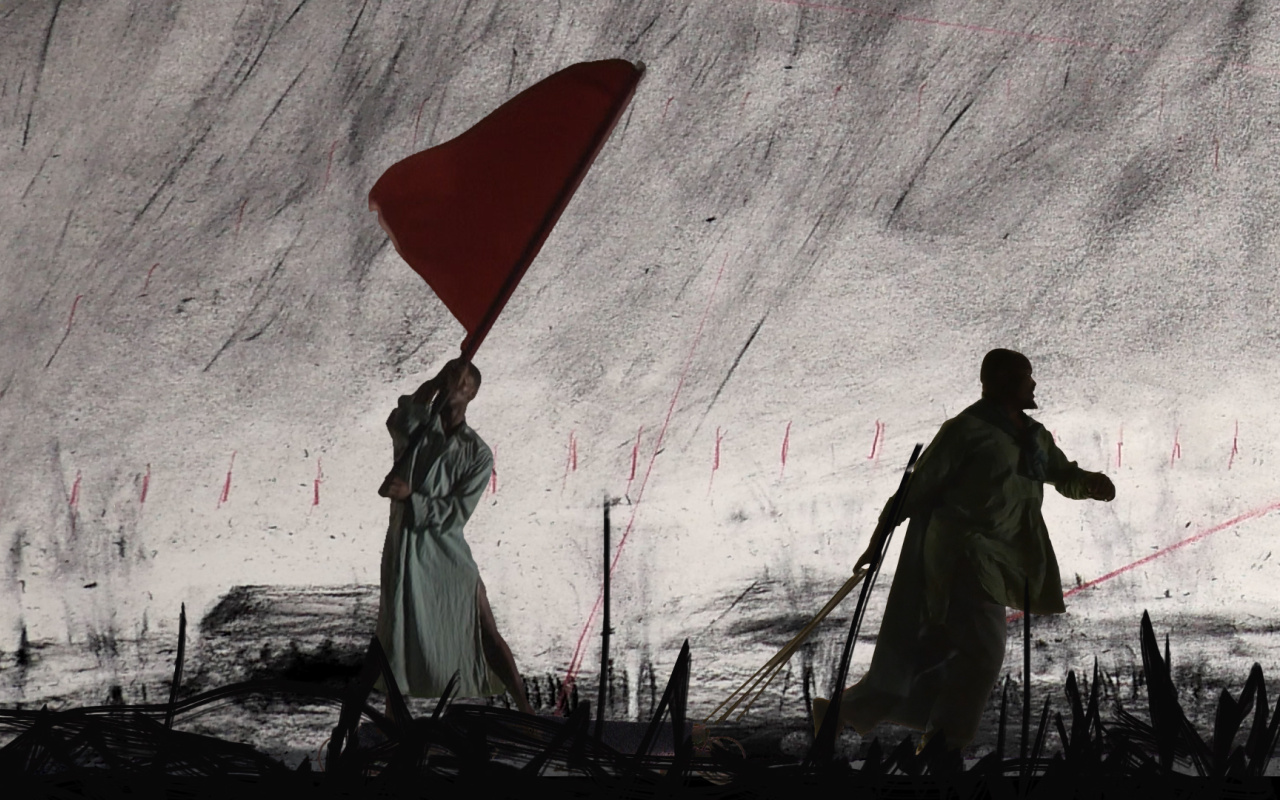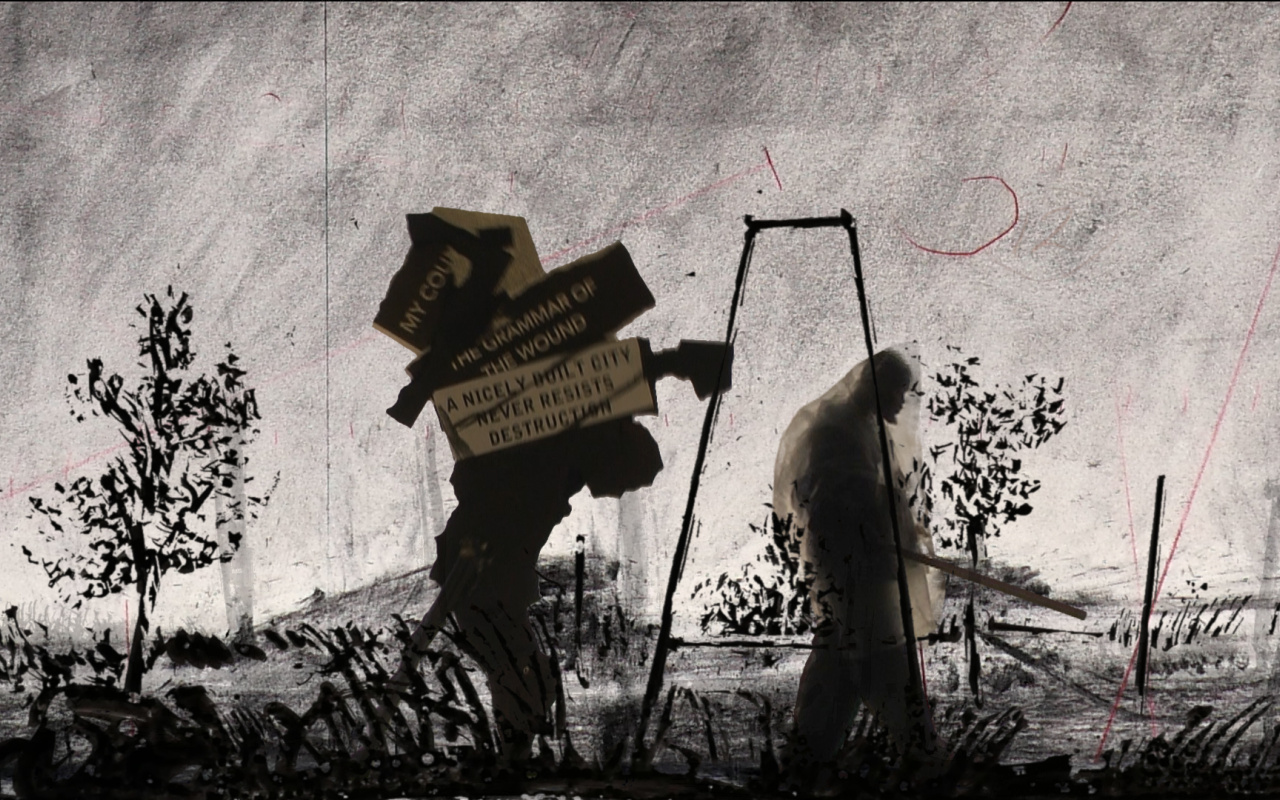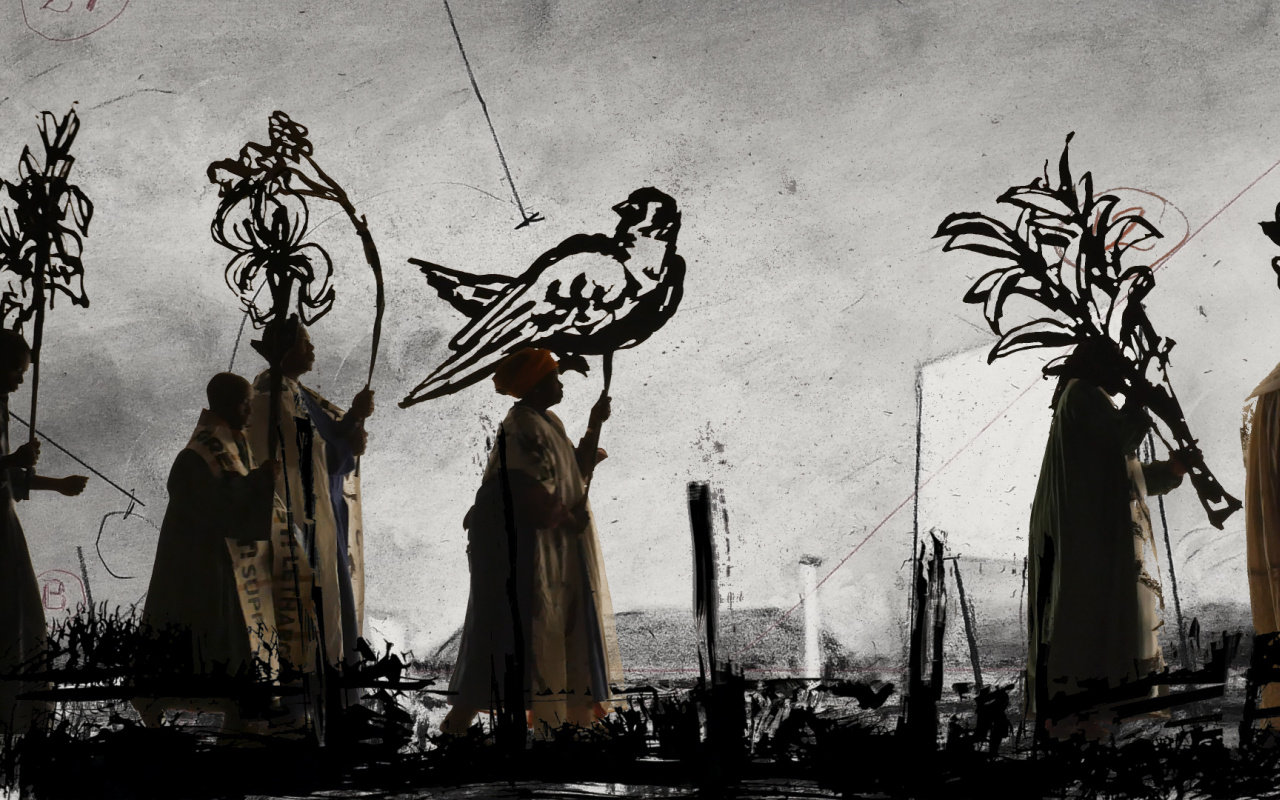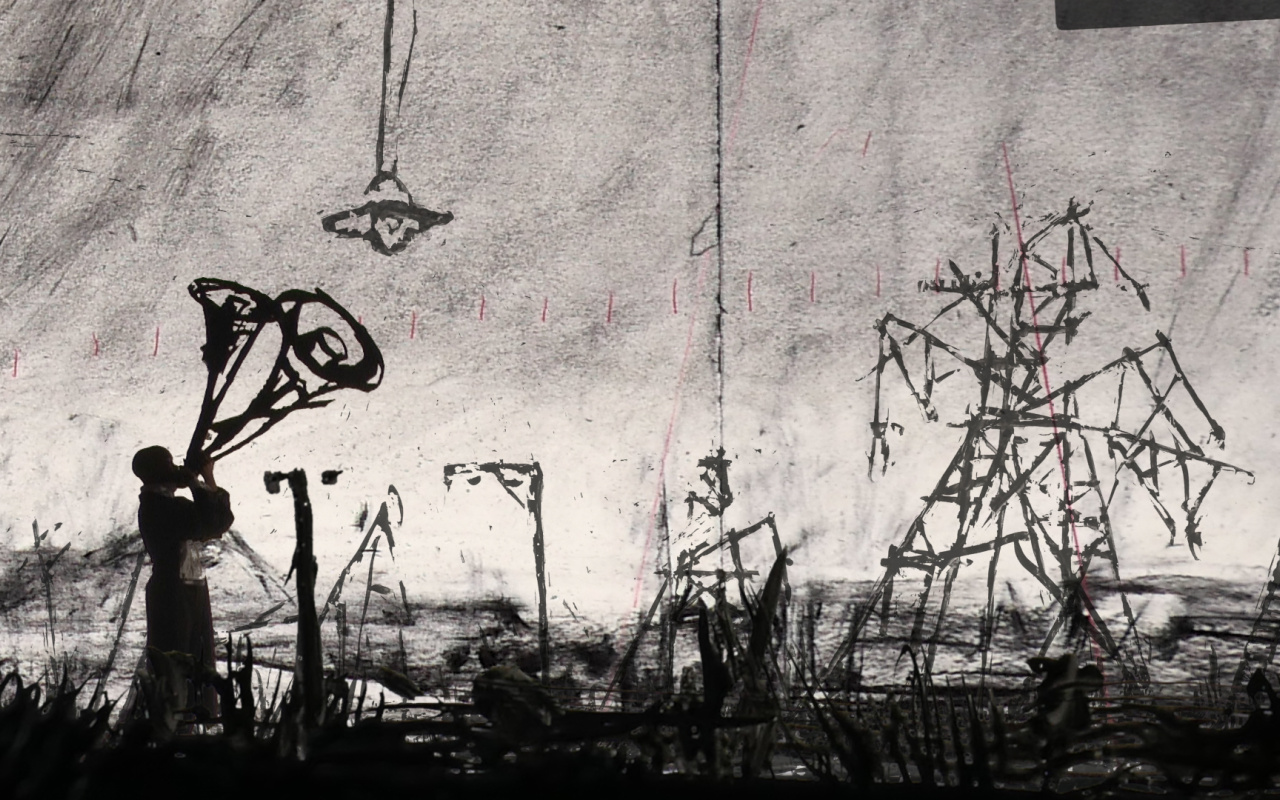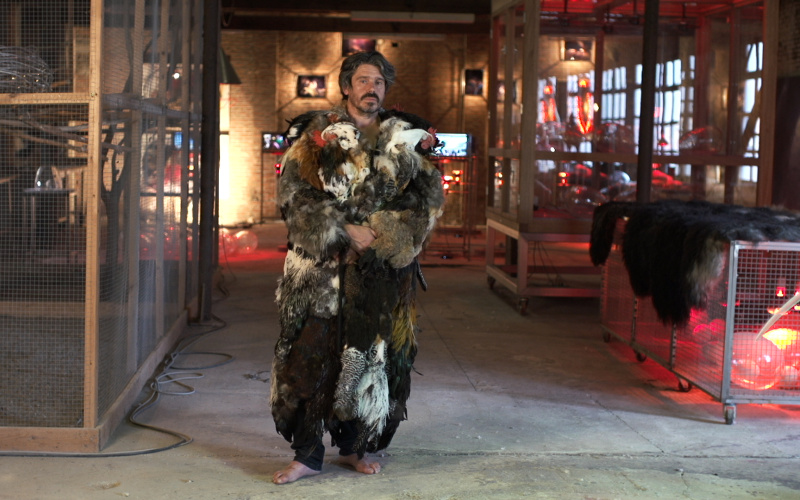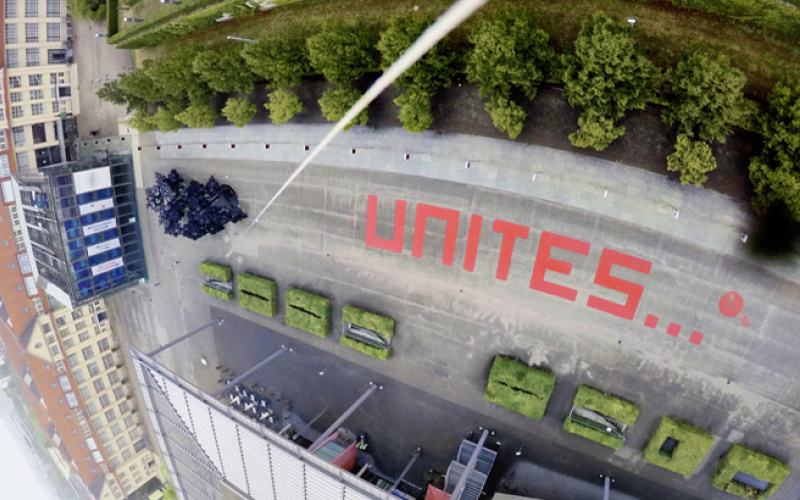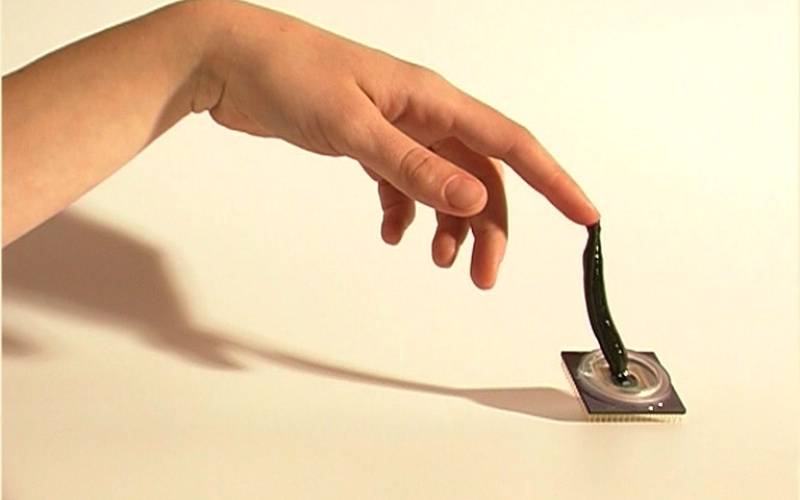William Kentridge: »More Sweetly Play the Dance«
An installation in the ZKM_Cube as part of the exhibition »Double Vision. Albrecht Dürer & William Kentridge« of the Staatliche Kunsthalle Karlsruhe.
BY CHRISTIANE RIEDEL
Installed in the subspace of the ZKM_Cube, the large projection »More Sweetly Play the Dance« by William Kentridge can be viewed as a type of “night satellite” of the Kunsthalle Karlsruhe’s exhibition »Double Vision. Albrecht Dürer & William Kentridge«. At nightfall, it becomes visible on the outer façade of the Cube, so that the exhibition extends as far as the ZKM spatially as well as in terms of time and media. What awaits the visitor is a large-scale, 22 metre-long and 6 metre-high, multi-channel audio-visual projection that emanates from the outer façade of the blue Cube to the ZKM_Forecourt and far into the city’s public space.
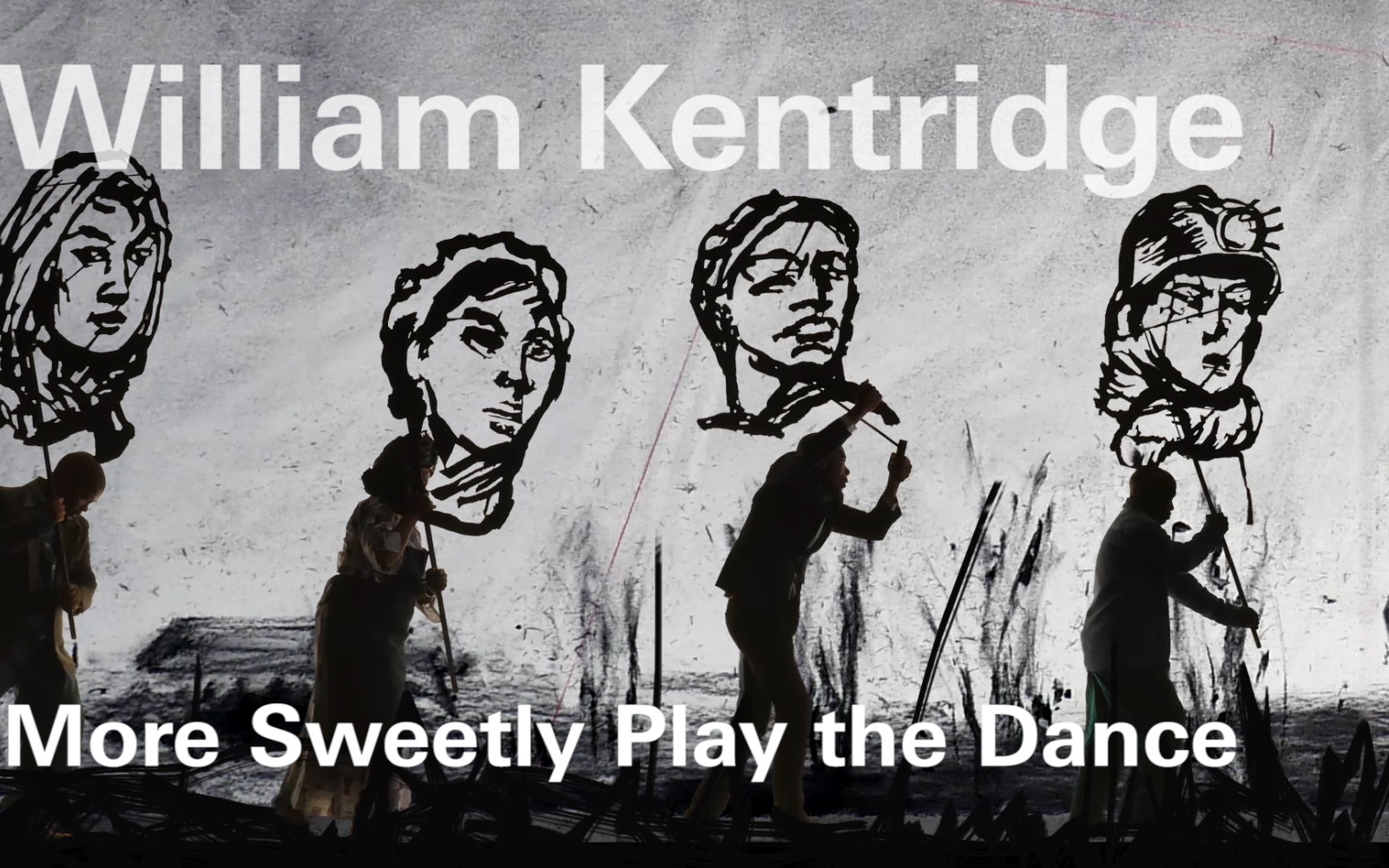
William Kentridge | More Sweetly Play the Dance
William Kentridge’s media work came into being at the invitation and as a co-production of the EYE Film Museum Amsterdam and the “Lichtsicht” Projection-Biennale in Bad Rothenfelde in 2015.
Thus his way to Karlsruhe was already paved, as ZKM CEO Peter Weibel was the artistic director of this projection-biennale, at which he invited William Kentridge to implement a projection. Peter Weibel has known the artist for more than 20 years. He first exhibited him in Europe, in 1996 in Graz, as part of the exhibition “Inclusion-exclusion. Attempt at a new cartography of art in the age of post-colonialism and global migration”.
Owing to this very personal relationship, Kentridge agreed to produce the work for Bad Rothenfelde and then – after stops at the Martin-Gropius-Bau in Berlin for the Berliner Festwochen as well as in Amsterdam, London and New York – to show it for free in Karlsruhe.
About the work
The title “More Sweetly Play the Dance” is an allusion to Paul Celan’s famous Todesfuge (Death Fugue) and the line “Play death more sweetly – this Death is a master from Deutschland”. The 15-minute media artwork by William Kentridge shows a procession of shadowy figures, which is accompanied musically by a South African brass band. One sees dancers, musicians, wearers of masks of sacred and ancient personalities, rubbish collectors, miners, clergymen, sick persons on a drip, body collectors, skeletons, politicians at the speaker’s desk, secretaries at typewriters, flag-bearers and silhouettes of puppets.
The dancing skeletons are reminiscent of a mediaeval death dance - the “danse macabre”, an invention of the Middle Ages with which tribute was allegorically paid to death but with which it was also defied. The procession and the large red flag refer to political demonstrations. Associations are awakened with religious processions and cheerful parades but also with streams of refugees.
The motif of the »procession«
Nevertheless, Kentridge does not present a specific procession, but rather the motif of the procession itself. This motif plays a central role in his oeuvre. It appears for the first time in 1989/90, at a time when the Apartheid system in South Arica began to be dissolved and at the same time Kentridge developed his animated films. Kentridge uses the historical and ambiguous motif of the procession as an image of history – as a symbol of political and historical change and of the process of social transformation.
The figures on whom Kentridge places the focus in the procession are miners with their spades, rubbish collectors on their trucks in the streets of Johannesburg, Ebola or AIDS sufferers – all people excluded from society.
Kentridge presents these people as bearers of culture and history carrying oversized silhouettes of saints and ancient personalities in front of them – that is, of recognised greats and heroes of history.
Aesthetically, the projection gives the impression of a moving woodcarving – almost completely maintained in black and white. The artist drew the silhouettes of the objects by hand with a few strokes of ink, subsequently projecting them onto large paper webs and enlarging them, tearing and cutting them out and mounting them onto cardboard.
Due to the illumination of the procession, the real performers and actors also seem like shadowy figures – colour is used only in a few prominent places, for example on the red flag.
The »shadow theatre« motif
The artist thus makes use of the historical medium of shadow theatre, which came from Asia to Europe in the 18th century and was also of great importance for cinema. Moreover, William Kentridge himself refers to the parallels with Plato’s Allegory of the Cave, in which people march behind a transparent screen and carry wooden objects in front of them, which then appear to the audience as much larger shadows.
In his works, Kentridge often superimposes various media such as drawing, silhouettes, shadow theatre, dance, theatre, music, collage, film and projection. And for a period of time he has been using computer animations, in addition to classic sign, photography and film techniques. In the case of “More Sweetly Play the Dance”, a program was used that comes from computer game technology and can detect movements. This gave rise, for example, to the death dance of the animated skeletons.
The observer as part of the procession
Overall, the artist thus creates a complex layered arrangement of media and meanings that lead one through time periods and metaphors of history.
In a way, the observer must comprehend the motif of the procession himself. In view of the enormous breadth of the panoramic image, he must move about and repeatedly choose new angles. It is not possible to see everything at once – especially since the projection and procession at the ZKM run around a corner. Thus, considering the work of William Kentridge has a temporal dimension and requires active perception – the observer becomes part of the procession.
About the artist
William Kentridge, born in Johannesburg in 1955, grew up in South Africa under the Apartheid regime. He comes from a Lithuanian-Jewish family. As lawyers, his parents defended many civil rights activists and opponents of Apartheid. To this day, his work is influenced by this political and social engagement of his family.
William Kentridge initially studied politics and African studies in Johannesburg. However, he then decided to study art in Paris in order to fight for justice with the means of art. Now, his works are collected and exhibited at the most important museums in the world – and he has been invited to the Biennale in Venice and documenta in Kassel on multiple occasions. The ZKM has also continuously displayed major works of him.
However, the current presentation of “More Sweetly Play the Dance” at the ZKM has a very special, location-specific characteristic and level of significance outside the art context that also affected the artist very much: the procession takes place not just in the public space, not just on the forecourt of the ZKM and in the shadow of the offices of the Public Prosecutor General – it takes place above all on the “Square of Human Rights”, which has been located in front of the entrance of the ZKM since 2015.
About the Author
Christiane Riedel was born in Karlsruhe and studied art history, architectural history and literature. Since 2002 she is managing director at ZKM | Center for Art and Media.
William Kentridge: More Sweetly Play the Dance
Fri, 09.09.2016 – Sun, 08.01.2017
Daily from nightfall till midnight
ZKM_Cube
Free entry
Category
News Category
- tracks & records
